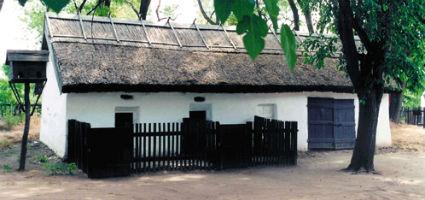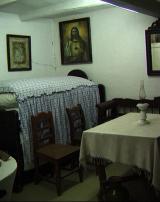2025. July 19. Saturday
Farming Museum of the Hungarian Agricultural Museum - Lajosmizse - Bene
 |
Address: 6050, Lajosmizse - Bene Bene tanya (Alsóbene 225)
Phone number: (1) 363-1117, (30) 236-4013
E-mail: muzeum@mmgm.hu
Opening hours: 15.03-15.10.: Tue-Sun 10-16
|
The Homestead Museum in Lajosmizse is made up of two homesteads. The traditionally furnished museum opened on 30 June 1972. It was the first homestead museum in Hungary.
The living quarter was probably built in 1870. The Németh family from Jászberény owned it for generations. The first owner Németh András farmed 64 acres. Then, it all meant that he belonged to the mid peasantry.
The homestead changed throughout the past centuries. An interesting feature is that one of the rooms was used a classroom at the beginning of the 20th century.
The reconstructed homestead museum is made up of the following buildings: living quarter with chamber, stable, summer kitchen, cellar, barn, tool shed, styles. There is also a doghouse, a yard stove and a house for doves. Manmade are the summer manger, a well, and the pole fence all around the homestead.
The buildings are situated by line and level in the yard. The so-called 'barn floor yard' is outside of the line of outbuildings. The varied crop were piled up there: hey, straw, etc. The fenced part beginning at the well was an important part for keeping animals.
The plants in the homestead are typical and credible. The mulberry trees, the little acacia forest and the fruit trees behind the summer kitchen.
The furnishing recalls the tradition of the peasantry of Lajosmizse at the turn of the century. Ornamented objects are not in abundance. The furniture betray the poverty of the peasants who moved from the towns due to their poverty.
The living quarter was probably built in 1870. The Németh family from Jászberény owned it for generations. The first owner Németh András farmed 64 acres. Then, it all meant that he belonged to the mid peasantry.
The homestead changed throughout the past centuries. An interesting feature is that one of the rooms was used a classroom at the beginning of the 20th century.
The reconstructed homestead museum is made up of the following buildings: living quarter with chamber, stable, summer kitchen, cellar, barn, tool shed, styles. There is also a doghouse, a yard stove and a house for doves. Manmade are the summer manger, a well, and the pole fence all around the homestead.
The buildings are situated by line and level in the yard. The so-called 'barn floor yard' is outside of the line of outbuildings. The varied crop were piled up there: hey, straw, etc. The fenced part beginning at the well was an important part for keeping animals.
The plants in the homestead are typical and credible. The mulberry trees, the little acacia forest and the fruit trees behind the summer kitchen.
The furnishing recalls the tradition of the peasantry of Lajosmizse at the turn of the century. Ornamented objects are not in abundance. The furniture betray the poverty of the peasants who moved from the towns due to their poverty.
